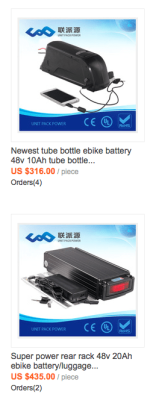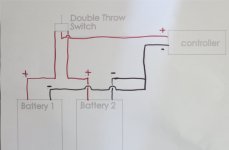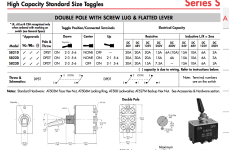tomjasz
1 GW
My friend insists on a switching setup for his two batteries. One is a dolphin pack 48V 11AH frame mount, the other is a 48V 20Ah rack mount. (All Samsung 29E)
He wants me to help him wire in a switch so that when one or the other packs runs down he can "switch tanks" as one would in a vehicle with dual tanks. I haven't the experience to choose the proper switch or design the proper wiring layout.
Suggestions for which switch, and from where?
Wiring scheme?
Thanks.
Tom (and Mark)
He sent me this switch link
http://www.amazon.com/Toggle-Switch-DPDT-Position-On-Off-On/dp/B001PNMC16/ref=cm_sw_em_r_dptod_DDN3vb1DPKETK_tt
He wants me to help him wire in a switch so that when one or the other packs runs down he can "switch tanks" as one would in a vehicle with dual tanks. I haven't the experience to choose the proper switch or design the proper wiring layout.
Suggestions for which switch, and from where?
Wiring scheme?
Thanks.
Tom (and Mark)
He sent me this switch link
http://www.amazon.com/Toggle-Switch-DPDT-Position-On-Off-On/dp/B001PNMC16/ref=cm_sw_em_r_dptod_DDN3vb1DPKETK_tt






